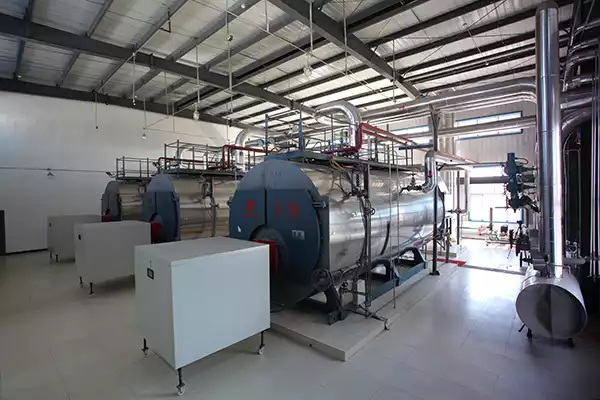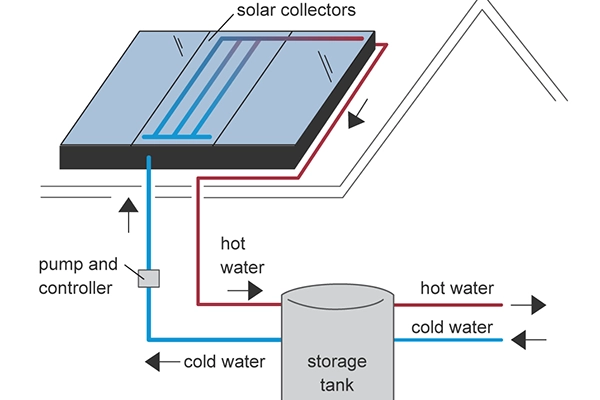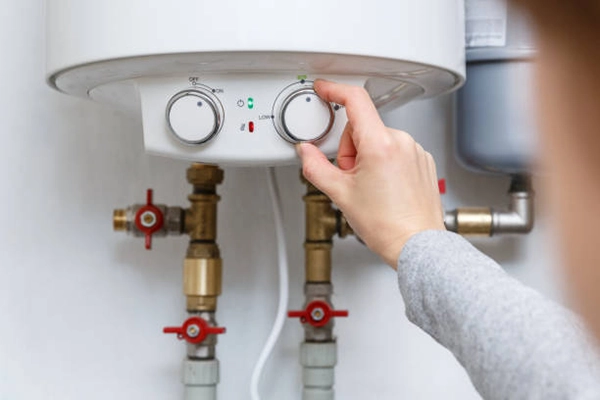

Explore our boiler blog for expert insights, industry updates, and valuable tips on boiler maintenance, efficiency, and more.
Explore our boiler blog for expert insights, industry updates, and valuable tips on boiler maintenance, efficiency, and more.
It is more important than ever to ensure that our hot water systems are as efficient, environmentally friendly, and reliable as possible. Here we’ll look at the main types of hot water systems, along with tips on how to choose one and improve its efficiency.
Hot water systems are a crucial part of any residential or commercial building's heating system. They heat water to a desired temperature and distribute it to various areas in the building where it is needed.
A hot water system typically consists of a water heater, a boiler, and a distribution network that carries the hot water to the various points of use.
The water heater or boiler is the heart of the system. It contains a burner or electric element that heats the water.
As the water is heated, it expands and rises to the top of the tank, displacing cooler water. When the hot water is needed, it flows from the tank through the distribution network to the point of use.
Tankless water heaters are a type of water heater that does not have a storage tank. These heaters provide hot water on demand, typically for a single faucet or showerhead. They are also known as point-of-use heaters because they heat water only when it is needed, reducing the amount of wasted energy associated with storing hot water in a tank.
Tankless or on-demand water heaters have surged in popularity in recent years. But are they the right choice for your home? Let’s examine the pros and cons.
The pros of endless hot water and potential energy savings make tankless worth considering. But carefully weigh the cons before taking the plunge.
Heat pump water heaters deserve special attention, as they are one of the most promising emerging technologies in residential hot water. Let’s take a closer look at how these super-efficient systems work.
Heat pump water heaters operate on a simple principle: they extract latent heat from ambient air and transfer it to water. It’s the same fundamental process a refrigerator or air conditioner uses, just in reverse.
An electrically powered compressor and evaporator coil draw warmth from the surrounding air. This heat is then pumped to a condenser heat exchanger immersed in the storage tank, which warms the water.
There are two main types of heat pump water heaters:
Because they utilize heat from the environment, heat pump water heaters typically consume about 50% less power than electric resistance storage tank models. This translates into meaningful savings on utility bills.
They can be up to 300% more energy efficient in ideal conditions than conventional electric tank systems. Even in frigid northern winters, heat pump systems retain a performance edge.
Heat pump water heaters pair perfectly with home solar photovoltaic (PV) systems. Some solar installers are now offering combined PV and heat pump packages.
With time-of-use controls, the heat pump can be set to operate using your home’s solar power generation during daylight hours. This maximizes the self-consumption of free renewable electricity. Any excess solar power is fed back to the grid.
Solar hot water system represents an elegant and reliable renewable energy solution perfected over decades. While not as trendy as new “smart” systems, solar thermal deserves consideration, especially in sunnier southern climates.
Solar collectors mounted on the roof gather heat from the sun’s rays. The solar energy heats either water or a heat-transfer fluid like glycol flowing through the panels. This hot fluid circulates through a coil or heat exchanger within the water storage tank, warming the household water supply.
Modern solar water heaters are a mature technology benefiting from decades of product iterations and improvements. Glazed flat plate and evacuated tube collectors offer excellent efficiency and withstand extreme weather conditions.
With minimal moving parts and simple maintenance, passive systems, in particular, can provide 20+ years of nearly trouble-free operation.
Upfront costs are higher than conventional water heating systems. However, with available federal tax credits and rebates, a solar thermal system can pay for itself in energy savings within 3 to 7 years. ROI is even faster in states with robust incentive programs.
Even in cooler climates, solar water heating can supply up to 85% of hot water needs during sunny summers. Many hot water systems use a conventional heater as a backup for cloudy spells. This hybrid approach provides the best of both worlds.
Hybrid systems take the benefits of smart water heating to the next level. These units combine multiple technologies—usually a heat pump with a secondary electric heating element. The heat pump mainly handles water heating, tapping into ambient air, or geothermal energy. When hot water demand spikes, the electric part boosts capacity.
Hybrid hot water system delivers the best of both worlds:
Currently, the upfront cost of a hybrid hot water system is higher than standard models. However, with energy prices destined to climb in the years ahead, the long-term savings may justify the investment for some homeowners. Costs should also decline as hybrids become mainstream.
If it’s time to purchase a new hot water system, do your homework to select the optimal model. Key factors to consider include:
You can zero in on the ideal hot water solution for your home and family by weighing these key variables.
If you’re building a new home, you have the advantage of a clean slate when planning your hot water system. Keep these tips in mind:
By planning, you can optimize hot water usage in your new home from day one.
Looking to maximize efficiency from your existing system? Here are handy tips and tricks for squeezing every drop of savings from your gas, electric, solar, or tankless water heater:
With a few tailored tweaks, you can optimize your hot water system. Over time, these small measures add up to significant savings!
One of the simplest ways to optimize hot water system efficiency is ensuring your heater thermostat is set enough. Follow these tips:
Lowering your temperature setting reduces waste while still meeting your hot water needs. Give it a try! Dialing in your ideal temperature takes trial and error but optimizes efficiency.
Do you still need to get ready to replace your current system? Not a problem. A few easy DIY upgrades can still make a noticeable difference in performance and efficiency:
With a few upgrades, you can squeeze more life out of your existing system while reducing energy waste at the same time.
With regular maintenance, the typical hot water system lifespan is 10-15 years. But there are telling clues your system may be nearing the end of its useful life:
Catching problems early allows you to replace the system on your terms instead of emergency failure at the worst possible moment.
Overall, no matter which hot water system you choose, there are important factors to consider. Such as fuel source, efficiency, and size, etc. With careful planning and selection, your next hot water system can provide years of reliable hydraulic comfort while conserving resources and reducing environmental impact.

We have more than 20 years of experience in boiler system equipment research and development and manufacturing. And committed to designing and producing boilers that suit your needs, including fire-tube, water-tube, and steam boilers, while also staying up-to-date with the latest technological boiler.
Get in touch